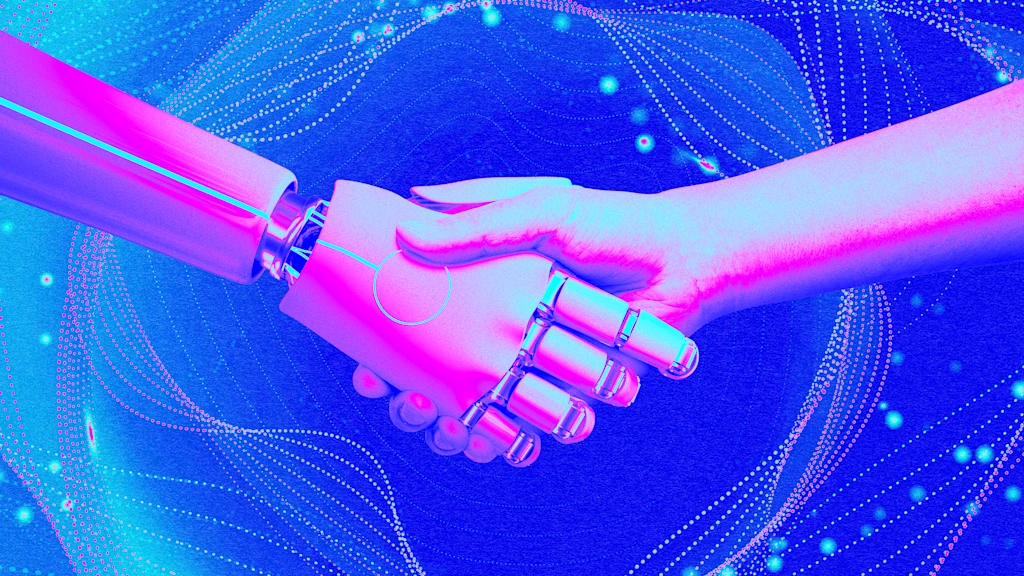
Greetings from Fast Company, and thank you, as always, for spending time with Plugged In.
As a technology journalist, I’ve always found value in using products I write about to get actual work done—even when they’re imperfect or downright terrible. So at this point, I’ve been knee-deep in AI for years. I’ve used a bevy of tools to research topics, fine-tune my writing, and tend to various other day-to-day tasks. It hasn’t always gone well. Sometimes, it’s even felt like AI was costing me time rather than saving it.
Recently, though, I’ve settled into my own particular AI groove. Blessedly, I work for a media outlet that isn’t so smitten with the technology that anyone here believes gorging on it should be a goal in itself. But I call on AI every day, and am confident it helps me produce better work more efficiently.
Some of the lessons I’ve learned so far:
Your technique matters at least as much as the specific AI you use. Mostly, I hop between ChatGPT and Claude. I’ve also been using Copilot more lately, have been nudging myself to increase my Gemini time, and give Perplexity a shot every now and then. My biggest takeaway is that the differences between these chatbots are often tough to pinpoint and, since they’re all evolving rapidly, subject to change. Rather than settling on one of them, I recommend focusing on upping your own prompt-writing game. Describe what you’re trying to do in painful detail, and you’re more likely to get it. If your instructions come off as excessive—maybe even patronizing—you’re in the right zone.
AI is far better at general concepts than specific facts—especially arcane ones. Earlier this year, I wrote an explainer about quantum computing and needed to brush up on some of the technology’s mind-bending basics. ChatGPT helped (along with plenty of old-fashioned legwork such as interviewing experts and reading technical papers, I hasten to add). But when I’m searching for a discrete fact, I still don’t trust LLMs to give me hallucination-free answers. For example, when working on our 1995 Week, I asked ChatGPT where the power button was on IBM’s ThinkPad 701. It expounded at length on why IBM chose to put it to the right of the display, where it would be easy to reach. Which was a smart decision on the company’s part—except the switch was actually to the left of the keyboard, and a bit of a hassle to locate. Once again, an LLM had fabricated a simulacrum of a fact that was difficult to tell from the real thing.
AI with citations is vastly more useful than AI without it. Hallucinations are most likely when a chatbot depends entirely on its own hermetically sealed LLM to gin up responses to your prompts. But these days, many AI tools can quickly hit the web as part of their answer-generation process. When they do that—and include citations with links to what they found—I find the accuracy of their responses dramatically better. And I can always click the links to see where the information originated.
Bringing your own data makes AI way better. The one AI tool I love unreservedly is Google’s NotebookLM. That’s because it’s not trying to synthesize and summarize all human knowledge—a goal that frequently gets ChatGPT and Claude into trouble—but only the documents I choose to upload. In my case, that’s usually transcripts of interviews I’ve conducted for an article. It scours them at least as well as I could if left to my own devices, does it far more quickly, and never introduces errors. Other more general-purpose AI bots also let you upload your own files, an option well worth exploring if you haven’t yet.
At its best, AI is better at drudgery than I am. Some of it, at least. Producing this newsletter each week requires some truly tedious tweaking of HTML code, a process that took me about 15 minutes each time and was difficult to perform without mucking up the code even further. It was a great day when I realized Claude could swiftly and reliably edit the code. I plan to Identify other boring-but-necessary aspects of my work and see if AI might lend a hand.
AI is not better than I am at the parts of my job that I love. Every so often, I satisfy my own curiosity by telling ChatGPT or Claude the topic of a Plugged In newsletter I’ve already finished writing. Then I ask it to generate its own version, at the same length. Once in a while, I’m startled by how close these LLMs come to producing something in the same zip code as my effort, at least in terms of overarching approach and takeaway. Ultimately, though, they always read like they were written on autopilot—which they were!—and are often rendered worthless due to all the stuff the AI doesn’t know it doesn’t know. I practically got into a verbal fistfight with ChatGPT after it churned out a newsletter on the U.S. government’s deal to take equity in Intel that read like the improvisations of a kid who’d failed to do his homework. It even got the company’s current CEO wrong.
In an odd way, my failed experiments with handing off the core of my work to AI are reassuring. I have no interest in avoiding the labor this newsletter represents. Having an LLM write drafts of my articles for publication sounds about as appealing as going to Disneyland and then paying someone else to ride Space Mountain on my behalf.
That’s a bonus lesson: Seeking out ways AI can make my life easier has been a worthwhile exercise. But it’s left me even more appreciative of the work I have no interest in automating—and grateful that there’s still so much of it.
You’ve been reading Plugged In, Fast Company’s weekly tech newsletter from me, global technology editor Harry McCracken. If a friend or colleague forwarded this edition to you—or if you’re reading it on FastCompany.com—you can check out previous issues and sign up to get it yourself every Friday morning. I love hearing from you: Ping me at hmccracken@fastcompany.com with your feedback and ideas for future newsletters. I’m also on Bluesky, Mastodon, and Threads, and you can follow Plugged In on Flipboard.
advertisement
More top tech stories from Fast Company
Why so many people still feel stuck in the ‘COVID pause’
Years after lockdowns ended, TikTok and Reddit users say the pandemic warped their sense of time. Read More →
Zoom is betting big on agentic AI with its new AI Companion 3.0
On September 17, the company unveiled an AI upgrade designed to move beyond video calls. Read More →
Etsy witches are having a moment
Spellcasting—for everything from baseball streaks to wedding-day sunshine to political hexes—is moving from fringe to mainstream. Read More →
Why MrBeast would be making a huge mistake launching his own mobile phone service
Wireless is not the new tequila for celebrities looking for a payday, and Beast is definitely not Ryan Reynolds. Read More →
This camera bag charm may become the biggest gadget of the year
It’s a disposable camera. It’s a bag charm. It’s completely out of stock. Read More →
OpenAI wants to transform business. Many of its users just want life hacks
Fresh data highlights the gap between OpenAI’s enterprise ambitions and how people actually use its models. Read More →



